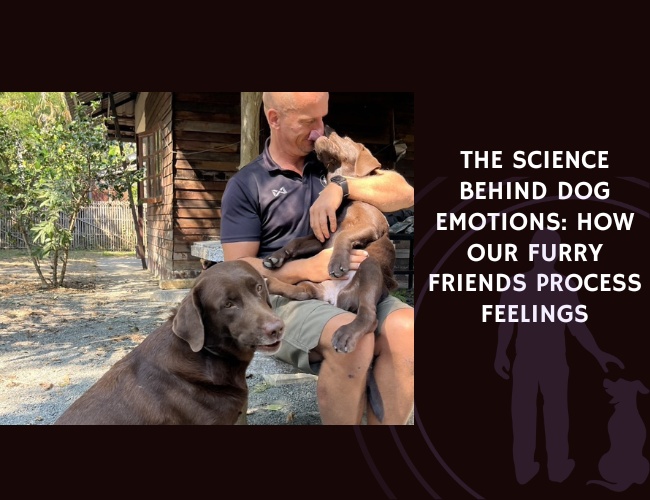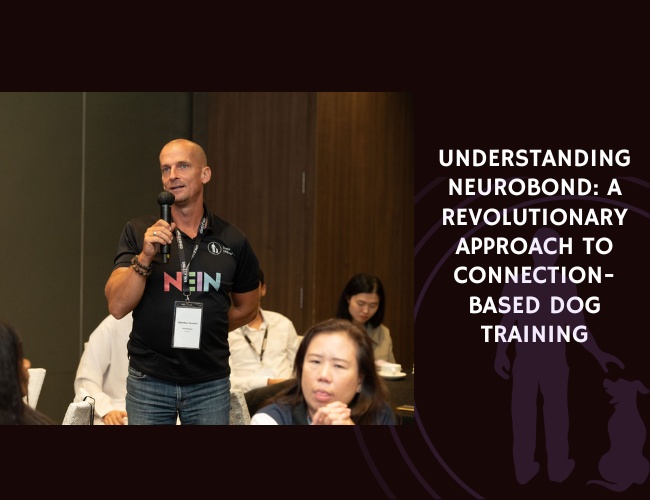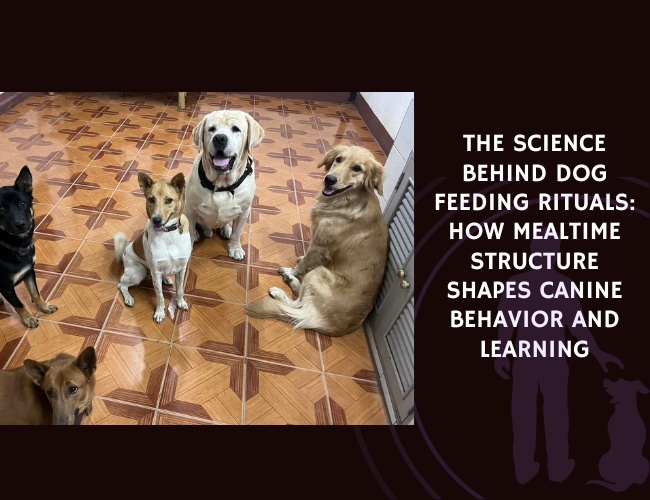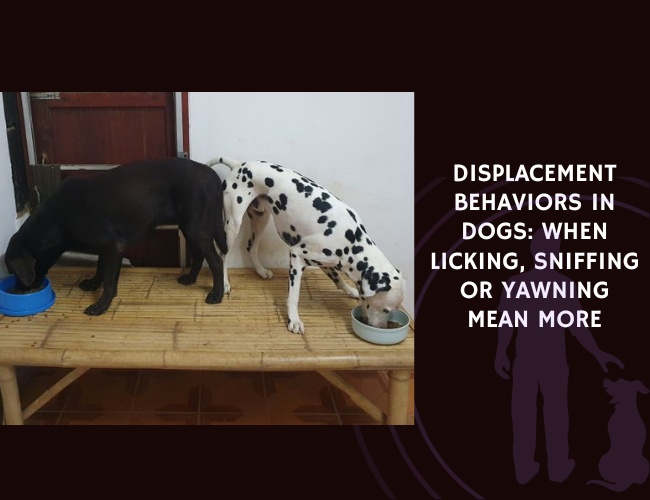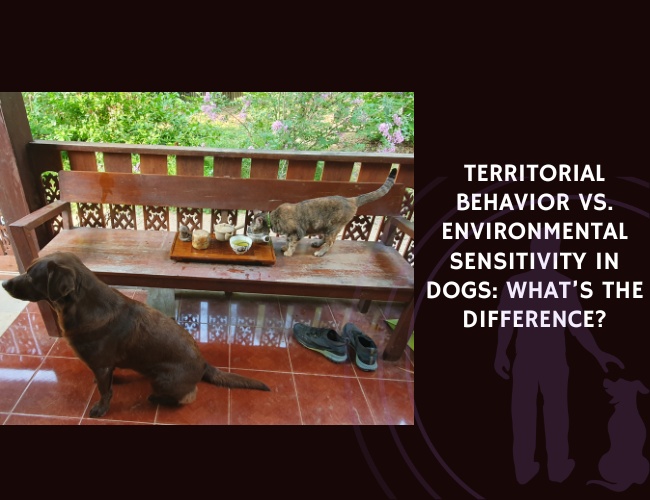Introduction to Canine Emotions
Understanding canine emotions is essential to comprehending the behavior and well-being of our furry friends. Emotions in dogs, like in humans, are complex psychological states involving physiological arousal, expressive behaviors, and conscious experience. These emotions play a pivotal role in how dogs interact with their environment, communicate with humans, and ensure their survival.
Evolutionary Development of Emotions in Dogs
Dogs have evolved as social animals, inheriting sophisticated emotional capabilities from their ancestors. Emotions were vital for their survival as they navigated through diverse social structures. For example, fear helped in avoiding dangers, while social bonding facilitated mutual help within packs. These emotional traits ensured not only the dog’s survival but also their ability to thrive in varied environments.
Dogs’ evolution alongside humans has further refined their emotional abilities. As humans and dogs spent more time together, dogs developed a capacity to read human emotions, leading to a mutually beneficial relationship. This ability to bond and empathize with humans has made dogs such successful companions.
Unique Emotional Bond Between Dogs and Humans
The relationship between dogs and humans is unique in the animal kingdom. Over thousands of years, dogs have adapted to live closely with humans, leading to a deep emotional bond. They have developed the ability to sense and respond to human emotions, such as stress, sadness, and joy. This connection is reinforced by interactions that release oxytocin, the “bonding hormone,” which is known to enhance feelings of trust and attachment in both dogs and humans.
Definition of Emotions
Emotions in dogs, as in humans, are multifaceted. They can be defined as complex psychological states that involve:
- Physiological responses: Changes in heart rate, hormone levels, and brain activity.
- Expressive behaviors: Visible changes such as tail wagging, ear positions, and overall body posture.
- Behavioral responses: Actions taken as a result of emotional states, like barking, retreating, or approaching.
Understanding and accurately interpreting these elements is crucial for ensuring the well-being of dogs. Recognizing what emotions they feel can help in fostering a healthier, happier, and more harmonious relationship between dogs and their human caregivers.
Transitioning to the biology of dog emotions, we delve deeper into the brain structures and chemical messengers that underpin these complex emotional experiences.
The Biology of Dog Emotions
Understanding the biology behind dog emotions is essential in grasping how our furry friends process their feelings. This chapter delves into the neurological and biological facets of canine emotions, focusing on their brain structure, key hormones, and the remarkable similarities between human and canine emotional processing.
Limbic System: The Emotional Center
The limbic system is a critical component of the brain involved in processing emotions. For dogs, this system includes the amygdala and hippocampus. The amygdala is particularly vital because it helps detect emotional stimuli. Meanwhile, the hippocampus is where memories associated with these emotional experiences are formed.
These structures work in tandem to ensure that dogs can recognize and react to various emotional cues. The amygdala’s role in emotional detection allows dogs to quickly assess whether a situation is safe or threatening, which is crucial for survival. The hippocampus then encodes these experiences into memories, enabling dogs to learn from past events and adapt their future behaviors accordingly.
Hormones and Neurotransmitters: The Chemical Messengers
Several hormones and neurotransmitters play significant roles in shaping dogs‘ emotional experiences:
- Oxytocin: Often called the “bonding hormone,” oxytocin is released during positive interactions such as petting or playing. It enhances the bond between dogs and their owners, making interactions more rewarding and emotionally enriching.
- Cortisol: Known as the stress hormone, cortisol is released in response to stress or fear. Elevated cortisol levels can affect a dog’s emotional state, leading to heightened anxiety or aggression.
- Dopamine and Serotonin: These neurotransmitters are linked to pleasure and mood regulation. Dopamine plays a role in the reward system, reinforcing behaviors that bring joy, while serotonin affects mood stability and overall emotional well-being.
Canine and Human Brain Emotional Processing: Striking Similarities
The similarities between canine and human brain structures are fascinating, especially when it comes to the limbic system. Research indicates that the way dogs process emotions closely mirrors human emotional processing, which suggests that dogs might experience emotions in a manner akin to humans.
Both human and canine brains respond to positive and negative stimuli through similar pathways in the limbic system. For example, oxytocin release in both species promotes bonding and social connection, underpinning the strong emotional ties dogs have with their human families.

Next Steps: Deepening Understanding
The inner workings of the limbic system, along with the roles of various hormones and neurotransmitters, provide profound insights into how dogs experience their emotions. As we continue exploring the biological underpinnings of canine emotions, we can further appreciate the depth and complexity of our furry friends’ emotional lives.
Understanding these biological principles is just the beginning. The next step is to explore how these biological processes translate into the emotions themselves, from the primary joys, fears, and surprises to the more complex feelings of guilt, jealousy, and empathy.
Types of Emotions in Dogs
Understanding the range of emotions that dogs experience is key to fostering better relationships with our canine companions. Just as humans experience a spectrum of emotions, dogs too have various emotional states that can be broadly categorized into primary and complex emotions. Additionally, dogs can exhibit stress and anxiety responses based on their environment and experiences.
Primary Emotions
Primary emotions are the fundamental emotional states visible in dogs. These emotions are instinctive and are typically observed across a wide range of animal species.
Joy
Dogs express joy in numerous ways, from wagging their tails energetically to jumping around with excitement. A dog experiencing joy may exhibit a relaxed and happy demeanor, often accompanied by playful behavior.
Fear
Fear is a vital emotion for survival, prompting dogs to react to potential threats. Indicators of fear in dogs include cowering, trembling, or hiding. They might also exhibit behaviors like lowered body posture, tucked tail, and wide eyes.
Anger
Anger or aggression in dogs can manifest as growling, barking, or showing teeth. This emotion usually arises in situations where a dog feels threatened or frustrated.
Disgust
Though less pronounced, dogs do exhibit disgust. This can be observed when a dog turns away from unpleasant smells or tastes, often scrunching up their nose or shaking their head.
Surprise
Surprise in dogs is typically indicated by sudden movements, alert postures, and a focused gaze. This emotion is usually short-lived and quickly transitions into another state such as joy or fear.
Complex Emotions
Complex emotions are those that involve higher cognitive processing and social awareness. Though there is ongoing debate about the extent to which dogs experience these emotions, evidence suggests that they do have the capacity for such feelings.
Guilt
Many dog owners report observing guilt in their pets, commonly when they return home to find chewed furniture or other mischief. While some studies suggest this might be more a response to the owner’s reaction than a true expression of guilt, dogs often show submissive behaviors, such as avoiding eye contact or lowering their head, in these situations.
Jealousy
Jealousy in dogs is particularly evident when they see their owners interacting with another dog or even a person. Dogs might push themselves into the interaction, bark, or whine to regain their owner’s attention. This suggests a form of social competition and emotional complexity.
Empathy
Empathy is the ability to recognize and respond to the emotions of others. Dogs often show empathetic behaviors by approaching and comforting humans who are distressed. This deep connection highlights not only their emotional intelligence but also their unique bond with humans.
Stress and Anxiety Responses
Stress and anxiety are emotional states that can significantly impact a dog’s well-being. Various factors can trigger these responses, ranging from a change in environment to past traumatic experiences.
Dogs display stress and anxiety through behaviors such as:
- Pacing
- Whining or excessive barking
- Destructive behavior, like chewing on furniture
- Avoidance or hiding
- Physical symptoms like excessive panting or drooling
Understanding these behaviors is crucial for providing appropriate care and comfort to our dogs, ensuring they lead happy and healthy lives.
Recognizing and interpreting these emotions can help owners respond better to their pets’ needs, ultimately fostering a stronger and more empathetic bond. This understanding also paves the way for improved training methods and stress reduction techniques that support the emotional well-being of dogs.
How Dogs Express Their Emotions
Understanding how dogs express their emotions is key to interpreting their needs and maintaining a strong bond with them. Dogs communicate their feelings through a combination of body language, facial expressions, and vocalizations. Let’s dive into each of these aspects to get a detailed understanding of how our furry friends convey their emotions.
Body Language
Dogs use a variety of body language signals to express their emotional states. Observing their body movements and positions can provide valuable insights into what they’re feeling.
Tail Wagging
Tail wagging is one of the most common indicators of a dog’s emotional state. A wagging tail typically signifies joy or excitement, but the speed and direction of the wag can reveal more specific emotions. For instance, a fast, wide tail wag often denotes happiness, while a slower, more cautious wag may indicate uncertainty or anxiety.
Ear and Eye Positions
A dog’s ear position can also reflect its emotions. Relaxed ears indicate a calm and content dog, while ears pinned back against the head can signal fear or aggression. Similarly, eye positions play a role; wide eyes may show surprise, whereas narrowed eyes could indicate discomfort or aggression.
Posture
A dog’s posture provides additional clues about its emotional state. Play bows, where a dog’s front legs are stretched out while the rear end remains elevated, are a clear sign of playfulness. On the other hand, a stiff or tense posture might indicate alertness or aggression. Recognizing these postural cues helps in predicting a dog’s behavior and responding appropriately.
Facial Expressions
Just like humans, dogs use facial expressions to communicate their feelings. These expressions can be subtle but are significant in understanding canine emotions.
Raising Eyebrows
Certain facial movements, like raising the inner brows, can indicate sadness or an attempt to appeal to humans. This expression makes dogs look more like human babies, eliciting nurturing responses from people.
Lip Licking and Yawning
Other expressions such as licking their lips or yawning may indicate stress, confusion, or uncertainty. These actions are often seen in situations where the dog feels uneasy or is trying to calm itself.
Vocalizations
Vocalizations are another vital aspect of how dogs express their emotions. Each sound they make can convey a wide range of feelings.
Barking
Barking is perhaps the most recognizable vocalization. Dogs bark for various reasons, including excitement, alertness, or to signal distress. The tone, pitch, and frequency of the bark can help decipher the specific emotion behind it.
Whining
Whining often indicates a desire for attention or a way to communicate discomfort, anxiety, or boredom. It’s a sound that tugs at our heartstrings and often prompts a nurturing response from humans.
Growling
Growling is typically a warning sign, indicating that the dog feels threatened or possessive. It’s essential to heed this vocalization seriously as it often precedes defensive or aggressive behavior.
As we can see, dogs have a rich repertoire for expressing their emotions, and by paying close attention to their body language, facial expressions, and vocalizations, we can better understand and care for our loyal companions. Understanding these cues helps enhance our bond with dogs and ensures their emotional well-being.

Dogs’ Emotional Connection with Humans
Recognizing and Responding to Human Emotional States
Dogs are highly attuned to human emotions. They can read human facial expressions and interpret vocal tones, allowing them to respond appropriately to their owners’ emotional states. This ability to recognize emotions is crucial for maintaining positive interactions between dogs and humans. For instance, a dog might approach a sad owner with a worried look or try to comfort them with physical closeness and gentle nudges. Studies support this ability, showing that dogs can process positive and negative human expressions and act accordingly.
Emotional Synchrony Between Dogs and Their Owners
Emotional synchrony refers to the mirroring of emotional states between dogs and their owners. Research has shown that dogs can mirror their owner’s emotions, whether it’s stress, happiness, or other emotional states. For example, if an owner is excited, the dog may exhibit signs of excitement like wagging its tail energetically. Conversely, if an owner is stressed, the dog might show signs of anxiety, demonstrating the deep emotional connection between humans and their furry companions. This mirroring strengthens the bond between them and enhances mutual understanding.
Empathy and Comfort-Seeking Behaviors

Dogs exhibit empathetic behaviors in response to their owners’ emotional states. This empathy often manifests as comfort-seeking actions, where dogs physically approach and offer solace to distressed humans. They might gently nuzzle, lay close to, or even lick their owners as a form of comfort. This demonstrates not only their ability to sense human emotions but also their desire to comfort and support their owners. As one can imagine, this responsive behavior significantly enhances the emotional bond and trust between dogs and humans.
Understanding the depth of emotional connection between dogs and humans can greatly enhance their relationships. These insights are critical for dog owners, trainers, and anyone interacting with dogs, ensuring that the welfare of these loyal animals is preserved and their emotional needs are met.
Up next, we will explore how supporting the emotional well-being of our canine friends can ensure their overall happiness and health.
Supporting Dog Emotional Well-being
Ensuring the emotional well-being of our furry friends involves a multi-faceted approach. This includes positive reinforcement training, stress reduction techniques, and early socialization, all of which are crucial for dogs’ emotional development and overall health.
Positive Reinforcement Training
Positive reinforcement training is a cornerstone in nurturing a dog’s emotional health. This method involves rewarding desired behaviors with treats, praise, or affection, thereby encouraging the repetition of those behaviors. Unlike punishment-based training, positive reinforcement fosters a safe and supportive learning environment. It builds trust and strengthens the bond between dogs and their owners. Studies have shown that this approach not only improves obedience but also enhances emotional well-being by reducing fear and anxiety.
Stress Reduction Techniques
Stress in dogs can arise from various sources, including environmental changes, lack of stimulation, and past trauma. Managing stress is vital for maintaining a dog’s emotional balance. Several techniques can help reduce stress and promote a calmer state of mind:
- Exercise and Enrichment: Regular physical activity and mental stimulation through interactive toys, puzzles, and playtime can help alleviate stress and prevent boredom. Activities like scent games and agility courses can be particularly beneficial.
- Safe Spaces: Providing a safe, quiet space where dogs can retreat when they feel overwhelmed is essential. This could be a designated room, crate, or a cozy corner with their favorite blanket or toys.
- Routine and Consistency: Dogs thrive on routine. Maintaining consistent feeding, walking, and playing schedules helps create a sense of predictability and security.
- Calm Environment: Reducing loud noises and sudden disruptions in the environment can help maintain a calm atmosphere.
Early Socialization
Early socialization plays a critical role in a dog’s emotional development. Introducing puppies to various environments, people, and other animals during their early weeks and months of life helps them become well-adjusted and emotionally resilient adults. Proper socialization reduces the likelihood of fear-based behaviors and promotes positive interactions.
- Puppy Classes: Enrolling puppies in structured socialization classes provides controlled exposure to new experiences and helps them learn appropriate social behaviors.
- Gradual Exposure: Introducing puppies to new stimuli gradually and positively ensures they feel safe and confident. This might include meeting different types of people, experiencing various sounds, and exploring different surfaces.
Proper socialization extends beyond puppyhood. Continued exposure to diverse environments and regular social interactions throughout a dog’s life further solidifies their emotional stability.
By implementing these strategies, we can support our dogs’ emotional well-being and enhance their overall quality of life. In the next chapter, we’ll delve into the ongoing research and the challenges that remain in fully understanding complex canine emotions.
Future Research and Challenges
Current Limitations in Understanding Complex Canine Emotions
Understanding canine emotions has come a long way, yet several challenges persist. One significant roadblock is interpreting complex emotions solely through behavior. While it’s clear that dogs express joy and fear in ways we can observe, emotions like guilt and jealousy are harder to pinpoint. The risk of anthropomorphizing—a fancy word for attributing human emotions to animals—means we might be seeing what we want to see rather than what’s truly there.
Need for Advanced Studies in Canine Neuroscience
To truly decode the emotional lives of our furry friends, we need advanced canine neuroscience. The role of the limbic system, including the amygdala and hippocampus, in processing emotions has been a focal point, but there’s much more to learn. New research could help us understand whether dogs experience complex emotions like guilt, jealousy, or empathy, which require higher cognitive processing. Future studies might include:
- Longitudinal Studies: These studies will observe dogs over a long period to see how their emotions develop and change. By tracking emotional development from puppyhood to old age, we can gain insights into how life experiences impact emotional well-being.
- Genetic Research: Different breeds have different tendencies, and genetics play a role in emotional predispositions. Understanding how specific genes affect emotions could lead to better breeding practices aimed at emotional health.
Potential for Improving Human-Dog Relationships Through Better Emotional Understanding
Our connection with dogs is special, partly because they can recognize and respond to our emotions. Imagine how much stronger that bond could be if we had a better understanding of canine emotions. Knowing when a dog feels stressed, happy, or anxious allows owners to address these feelings more effectively.
- Training and Behavior: Positive reinforcement training already focuses on enhancing emotional well-being. With a deeper understanding, trainers could tailor techniques to individual dogs more effectively, ensuring that training supports emotional health.
- Welfare Practices: Implementing stress reduction techniques and creating enriching environments can be more precisely geared toward individual emotional needs. Techniques like enrichment activities and creating safe spaces will significantly improve dogs’ emotional health.
- Therapeutic Uses: Dogs are increasingly used in therapeutic settings to help humans. Advanced understanding of their emotions could optimize these interactions, benefiting both dogs and humans alike.
In conclusion, advancing our knowledge of canine emotions holds great promise. By overcoming current limitations and investing in future research, we can enhance not only the well-being of our dogs but also the profound bond we share with them.

